Welcome to Tnet.
There’s an ambiguity in the phrase “Silver plate”. Do you mean that you believe it’s a plate made from silver, or that it’s a piece of silverplate? I presume the latter but, if you don’t think it’s plated, is there any possibility of it being pewter? Has it been tested?
The marks are mystifying but there are still thousands of marks on European Continental silverplate which are undocumented or sufficiently obscure that they’re difficult to find in English language reference sources. Marks for pewter are often even more difficult to track down. I would be sure this is a Continental piece.
I have a few observations rather than an identification, but perhaps they will trigger something that leads to an identification.
Front Engraving
It’s rather splendid and very skilfully done. The fish appears to be an anatomically accurate representation of a marlin (rather than a swordfish). The tray is the wrong shape for a serving dish for fish, so I would assume the engraving to be a heraldic emblem for someone or something.
Given the accuracy of the engraving, I think it would be fair to assume that the crown above it is also heraldically accurate. It’s not a Regal or Imperial crown, but has the features of either a European Duke/Duchess (notably Sweden) or an “Adelskrone”, as used by untitled nobility in ‘Prussian/German Empire’ regions. My money would be on the latter, for reasons given later.
Backstamps
I’ve never seen a set of marks like that on silver or silverplate. One curious thing is that the marks also include a marlin. I’m struggling to think why what appears to be part of the set of (presumably) maker marks would also be repeated on the front engraving as decoration.
The first of the backstamps seems to be a crowned ‘W’ within a Teutonic cross, depicted as a medal. The cross itself has been used as an emblem in the former Holy Roman Empire since the 13th Century and later in the Prussian/German Empire, but it’s first use in the form of a medal was by Prussia in 1813 during the Napoleonic Wars. That’s at odds with the ‘1802’ date on the shield as the third mark. I would guess that date might be the establishment date for the maker, not a true date for the tray itself.
Also, the crowned W has an Imperial crown and looks to be a Royal cipher of the type used in the Prussian/German Empire. For an 1802 date it would have to be for Frederick William III (1797-1840) but he used an entwined ‘FW’ as his monogram. It looks more like the monogram of Wilhelm I (1861-1888).

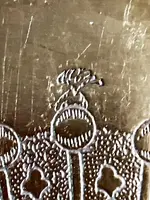 IMG_1366.webp659.1 KB · Views: 26
IMG_1366.webp659.1 KB · Views: 26 IMG_1368.webp50.8 KB · Views: 28
IMG_1368.webp50.8 KB · Views: 28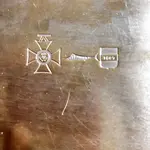 IMG_1015.webp787 KB · Views: 26
IMG_1015.webp787 KB · Views: 26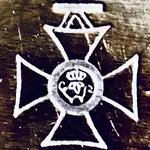 IMG_1018.webp211.5 KB · Views: 28
IMG_1018.webp211.5 KB · Views: 28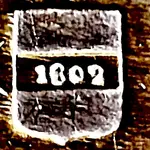 IMG_1020.webp120.5 KB · Views: 29
IMG_1020.webp120.5 KB · Views: 29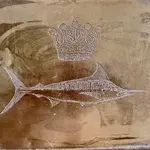 IMG_1013.webp1 MB · Views: 29
IMG_1013.webp1 MB · Views: 29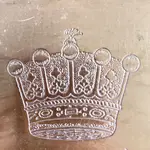 IMG_1014.webp760.3 KB · Views: 34
IMG_1014.webp760.3 KB · Views: 34 IMG_1732.webp632.8 KB · Views: 35
IMG_1732.webp632.8 KB · Views: 35 IMG_1733.webp582.5 KB · Views: 32
IMG_1733.webp582.5 KB · Views: 32




